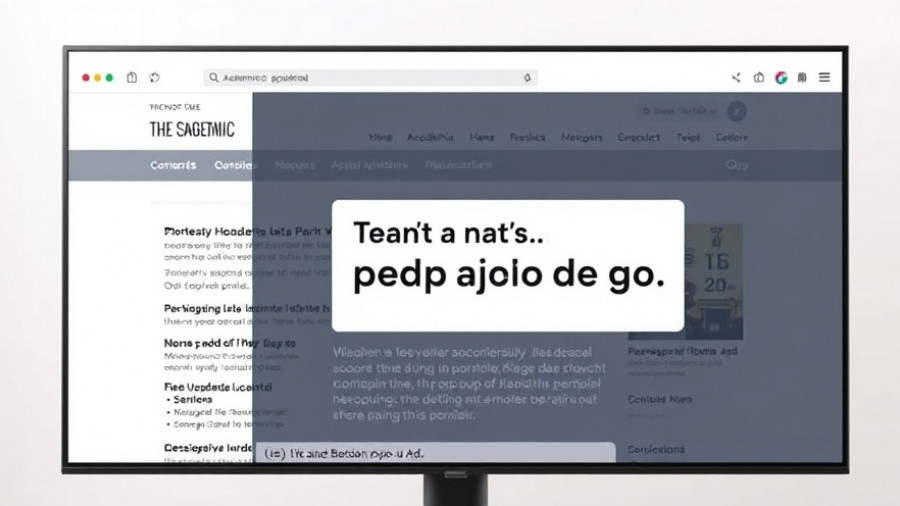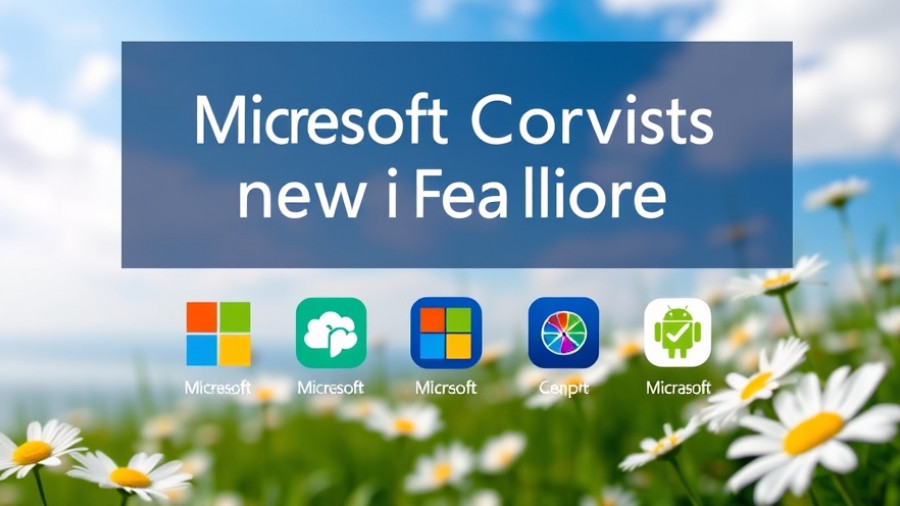
The Rise of Microsoft Copilot: A New Era for Productivity
With the rapid improvements in artificial intelligence, Microsoft has unveiled a tool that could redefine how we interact with technology on a daily basis: Copilot. This AI-powered assistant is designed for integration within the Microsoft ecosystem, including essential applications like Word, Excel, and Outlook, aiming to enhance productivity and simplify complex tasks.
What is Microsoft Copilot?
At its core, Microsoft Copilot acts as a conversational assistant. It enables users to engage in a dialogue using everyday language—whether you're drafting a report, analyzing data, or preparing a presentation, Copilot aims to make these tasks more accessible. By leveraging information from a user’s documents, emails, and messages, the tool offers tailored suggestions, enhances writing, and creates data visualizations—all under the purview of user consent.
Designed for Efficiency: How Copilot Can Help You
Imagine being able to draft emails and reports with an AI that understands your stylistic preferences. Furthermore, for those inundated with intricate spreadsheets, Copilot can distill critical insights into digestible summaries. Ideal for researchers, analysts, and project managers, this tool hopes to cut down the time spent on mundane tasks. Users can even request swift answers during web browsing, eliminating the jump between Google searches and clickbait links and facilitating a more streamlined information retrieval experience.
The User Experience: Pros and Cons
While Microsoft's ambitious foray into AI offers extensive benefits, it is crucial for users to approach with caution. The current iteration of Copilot is still developing, and users might encounter instances of what is termed 'hallucination'—misleading outputs produced when the AI synthesizes information incorrectly. Furthermore, the privacy of sensitive documents can become a concern, as users grapple with the implications of granting access to their files and communications.
Is Microsoft Copilot Right for You?
Evaluating the utility of Copilot heavily depends on your individual or organizational needs. If your typical day involves creating extensive documentation, analyzing data sets, or collaborating through Microsoft 365 applications, Copilot could be invaluable in enhancing your workflow. However, for those who casually browse the web and only check emails occasionally, the potential benefits may seem limited.
Exploring Alternatives
While Microsoft is making strides with Copilot, it's essential to remain aware of alternative AI technologies that extend beyond the Microsoft environment. OpenAI's ChatGPT and Google's Gemini are just a few standalone options available to users wanting to experiment with AI without integration into their daily toolkits.
Acquiring Knowledge and Understanding
In the quest for productivity, understanding the capabilities and limitations of tools like Microsoft Copilot is crucial. As AI continues to evolve, being informed about the available options prepares users to make decisions aligned with their needs and ethical boundaries. The growing reliance on digital assistants makes it paramount to recognize both their potential and pitfalls.
Future Trends in AI Assistants
As technology unfolds, one can predict further integrations and advancements in AI assistants. Microsoft is not alone in the race; competitors are innovating rapidly, making the landscape exciting for users and developers alike. Keeping abreast of these developments ensures that professionals understand how to harness AI's capabilities effectively while navigating its challenges.
Conclusion: The Need for Caution and Practicality
As we step into this new AI-driven era initiated by Microsoft Copilot, users must evaluate their engagement with these tools cautiously. While they offer unprecedented opportunities for efficiency and productivity, they also pose risks related to accuracy and privacy. Whether you choose to embrace Copilot or explore other standalone AI tools, being informed and proactive will ensure you leverage these technologies to their full potential.
 Add Row
Add Row  Add
Add 




Write A Comment